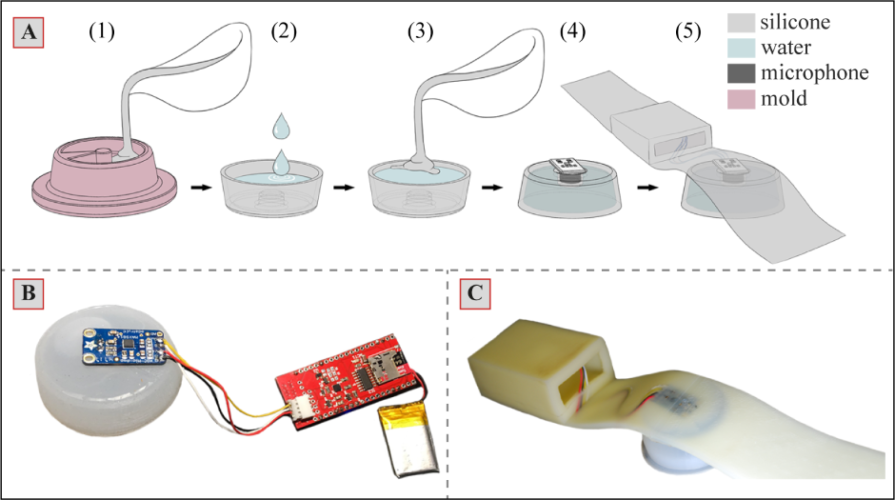
This is the claim of researchers at Imperial College London, whose new health-tracking sensor detects vital signs like heart and breathing rates through fur and up to four layers of clothing.
Transformative electronics reconfigure into wearables
In use, they could help owners keep track of their pets’ health and help vets monitor animals during surgery without the need for shaving. In another application, they could help improve the work of sniffer dogs. In people, they could provide a new way to measure vital signs that can provide measurements over clothing without direct contact with the skin. The research on this new class of sensors is published in Advanced Functional Materials.
In a statement, lead author Dr Firat Guder, of Imperial’s Department of Bioengineering, said: “Our stretchy, flexible invention heralds a whole new type of sensor that can track the health of animals and humans alike.”
The new device is made of a silicone-water composite material which houses a microphone that picks up sound waves. It is flexible and stretchy enough that it tightly moulds to the shape of the fur, clothing, or body part it is placed on.
First author Yasin Cotur, of Imperial’s Department of Bioengineering, said: “The sensor works like a watery, squishy stethoscope, filling any gaps between it and its subject so that no air bubbles get in and dampen the sound.”
The sound is converted to a digital signal which is then transmitted to a nearby portable computer so that people can track an animal’s physiology in real-time.
When the researchers tested their device on five humans and one dog, they found that it works through up to four layers of clothes, and that the sensor works best when the clothing or fur sits right up against the skin.

As well as health tracking, the researchers say the sensors could help turn findings from sniffer dogs into measurable data.
Sniffer dogs are trained to exhibit behaviours like sitting or barking when they detect a target object such as an explosive device or person stuck inside rubble following an earthquake. When dogs ‘alert’ to target objects, their heart and breathing rates increase, but this ‘alerting’ behaviour can be difficult to quantitively measure.
The researchers claim their new sensor could establish baselines of normal heart and breathing rates from which to quantify the level of excitement for each dog. This would be measured by how much their vital signs diverge from the norm.
By measuring how excited the dogs are, an inbuilt algorithm might be able to tell the strength of the dog’s reaction to the smell it detects and work out how certain the dog is of finding the desired object.
The researchers will next try to adapt the new fur-friendly sensors for use on other types of pets, as well as horses and livestock.
Yasin said: “The next step is to validate our system further with animals, primarily focusing on sniffer dogs and then horses and livestock later on.”





Nanogenerator consumes CO2 to generate electricity
Nice to see my my views being backed up by no less a figure than Sabine Hossenfelder https://youtu.be/QoJzs4fA4fo